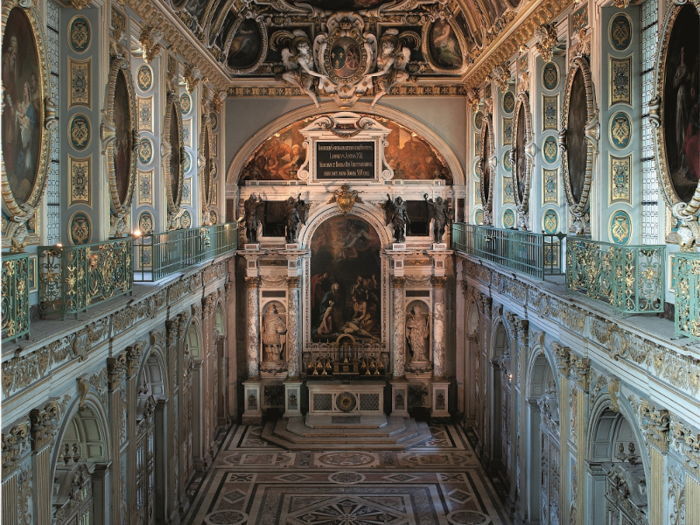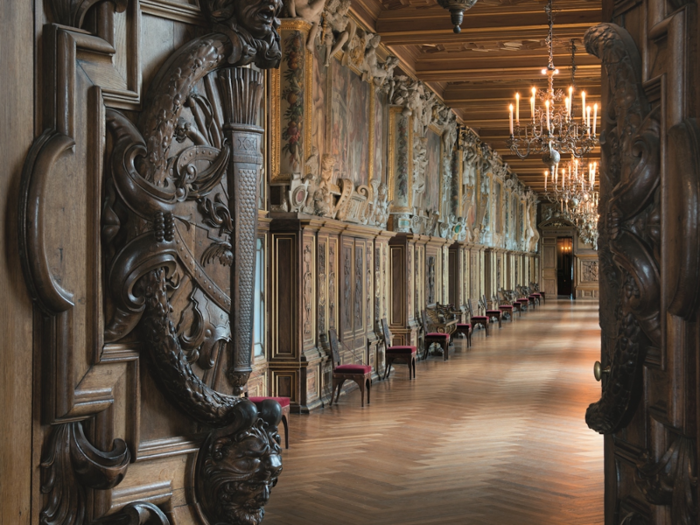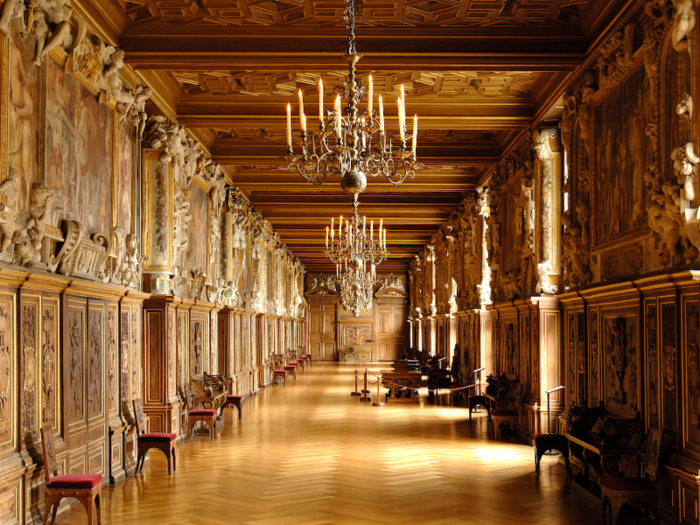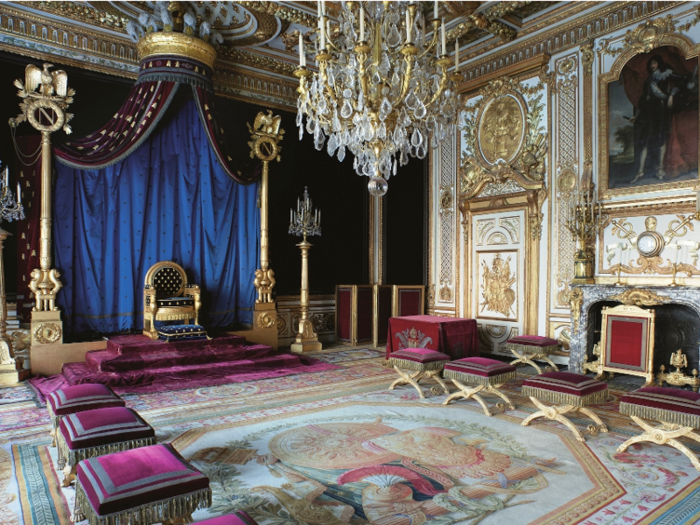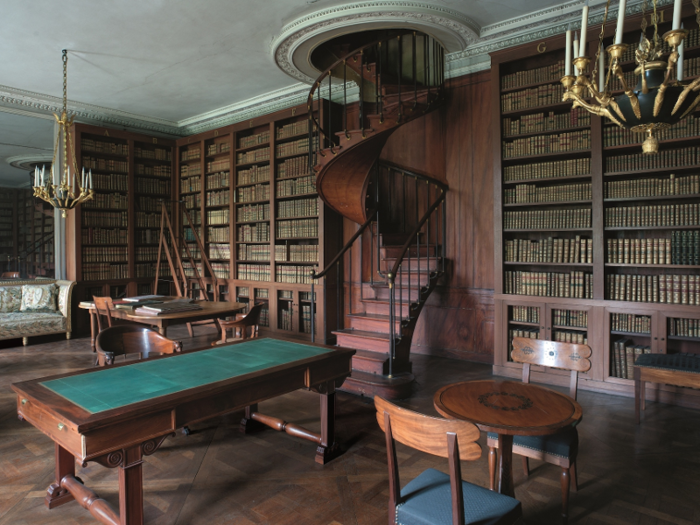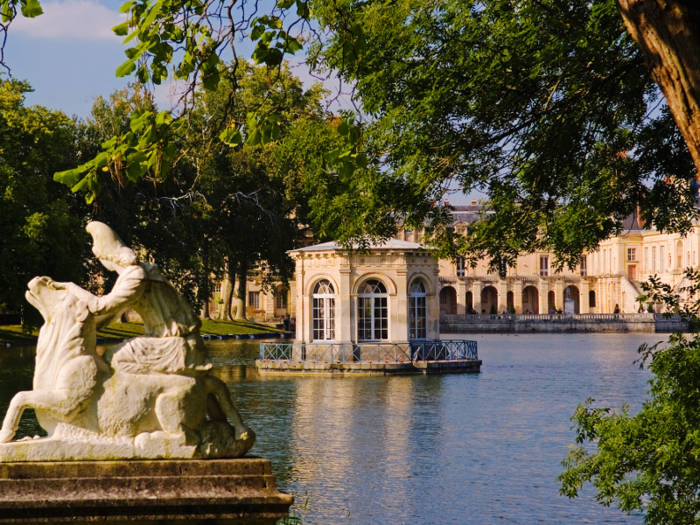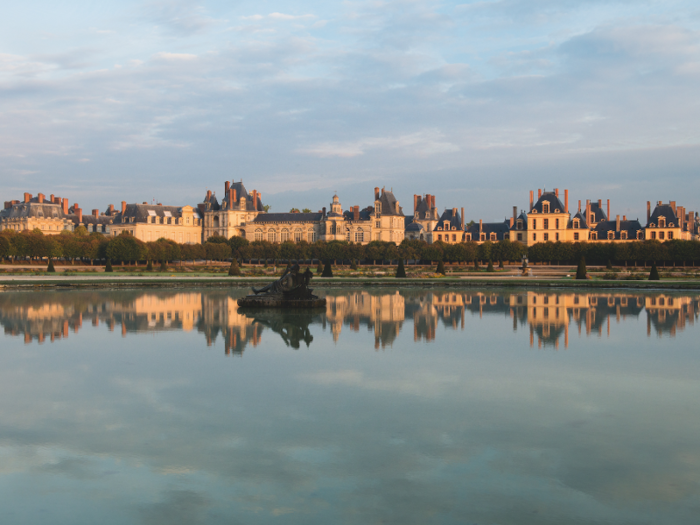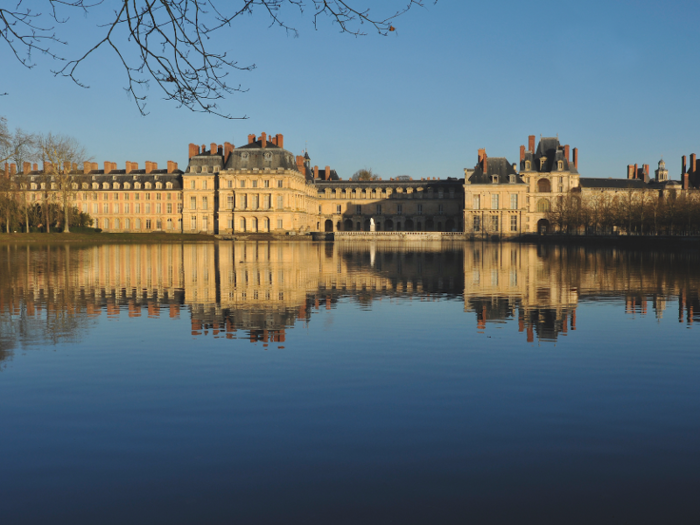The palace had been falling into ruins until the 16th century, when Francis I had it refurbished. He was inspired by the Italian Renaissance, and, according to Very French, instructed his architects to built a "New Roma."
The palace has 1,500 rooms, and spans 300-acres.
Source: Very Frenchy
This gallery pictured below was named after Francis I.
Per the New York Times, the gallery is 200 feet long and features the work of popular Italian artists. According to Britannica, the artwork specifically created for the palace came to be known as School of Fontainebleau — an art movement dedicated to the mixture of Italian and French art styles.
Source: New York Times, Britannica, University of Notre Dame
But today, most know the palace best as the home of Emperor Napoléon I, who also renovated the property during his reign.
The conqueror's embellishments ranged from tearing down an entire wing of the château to built a larger courtyard, to placing an "N" on the iron gates at the entrance of the palace.
Source: New York Times
With centuries of stories in its walls and a whopping 1,500 rooms, every aspect of this palace has been touched by history.
In 1831, Emperor Napoléon III, nephew of Napoléon I, decided to build a new theater in the palace. He hired Hector Lefuel to design a 400-seat theater, inspired by Marie Antoinette's Trianon theater at the Palace of Versailles.
Source: Château de Fontainebleau
Some of France's greatest architects, including Philibert Delorme, Ange-Jacques Gabriel, and André Le Nôtre, also worked on the palace over the years.
It has embellishments from Henri II, his wife, Catherine de Medici, and his mistress, Diane de Poitiers. The palace also has a Turkish boudoir, built in 1777 for Marie Antoinette.
Source: New York Times
In October 2019, Jean-Christophe, a descendant of Napoléon I, married Countess Olympia von und zu Arco-zinneberg, a descendant of Napoleon's second wife, Marie Louise.

